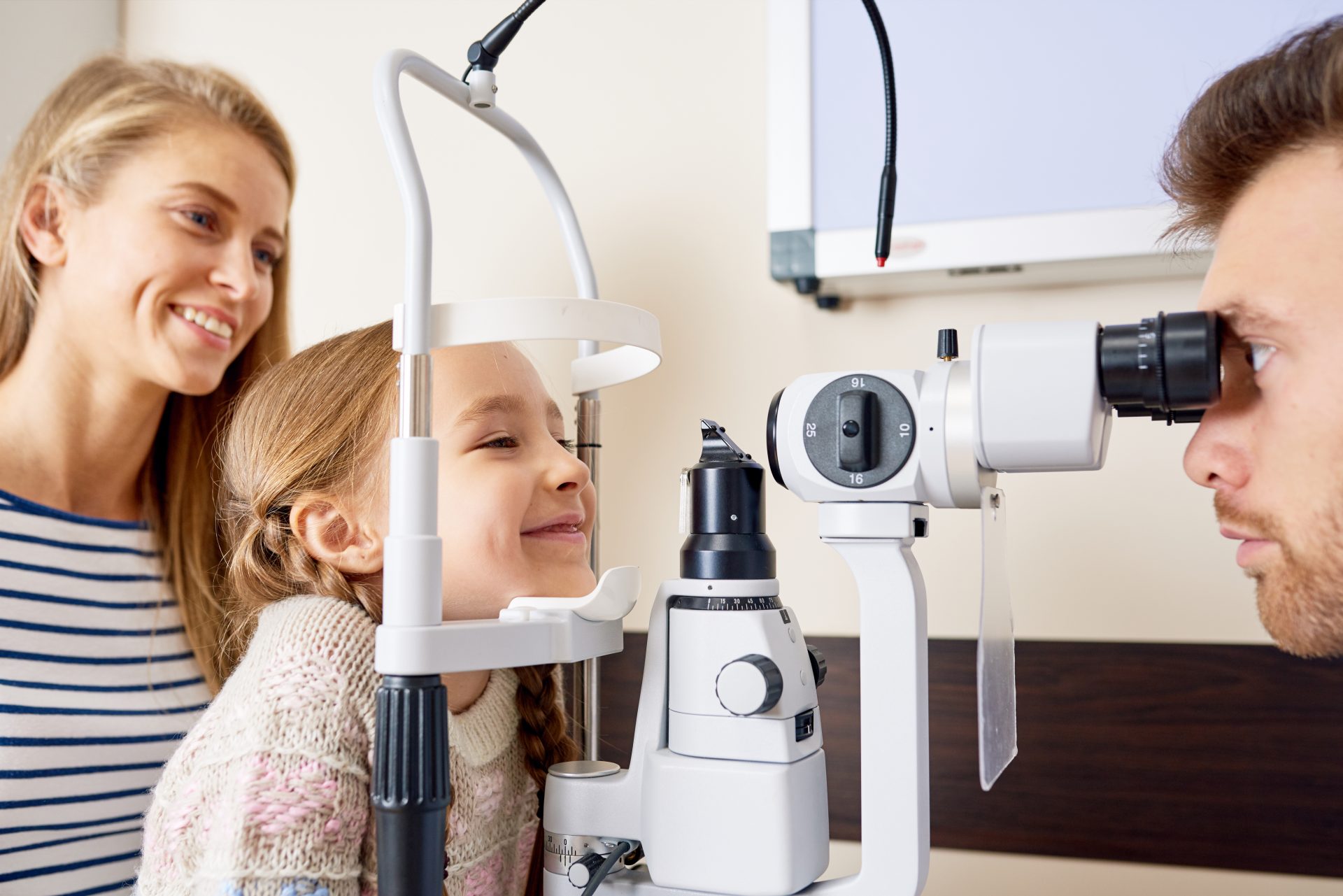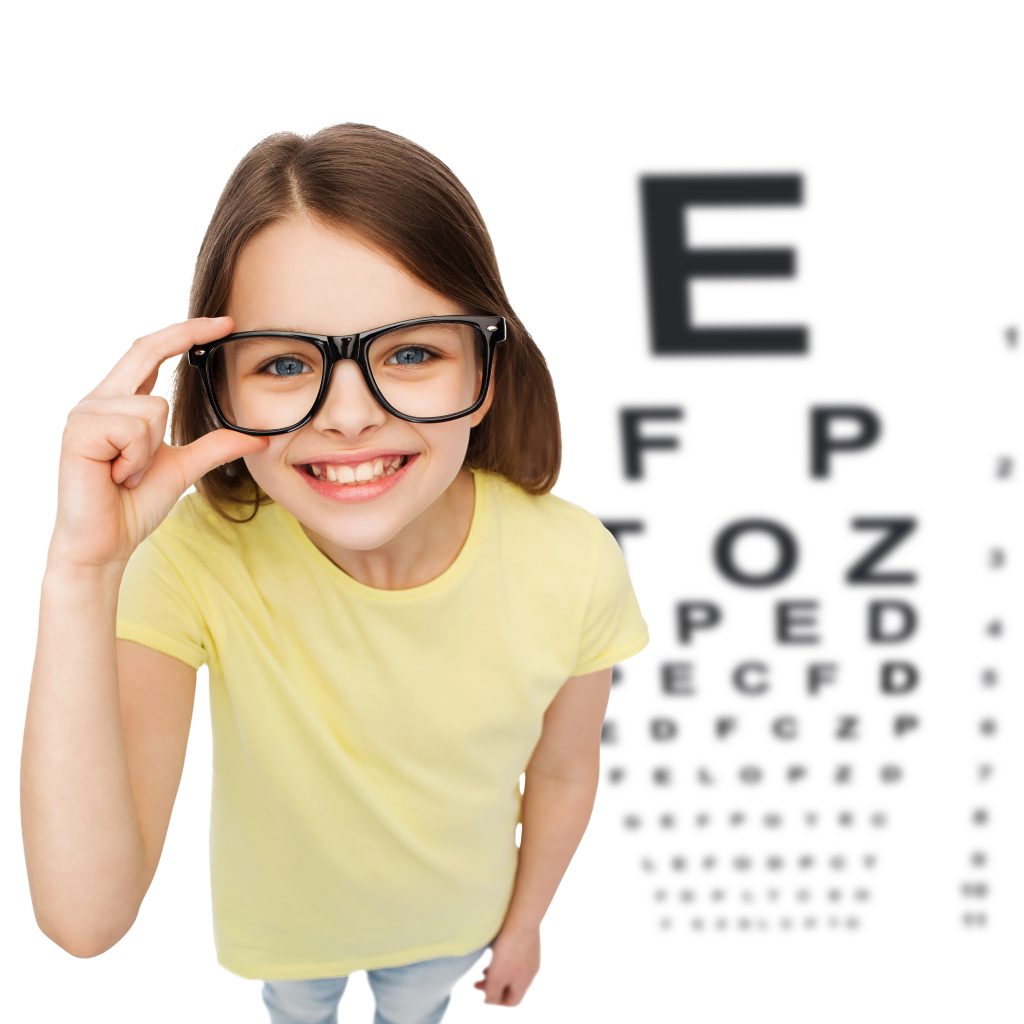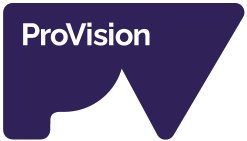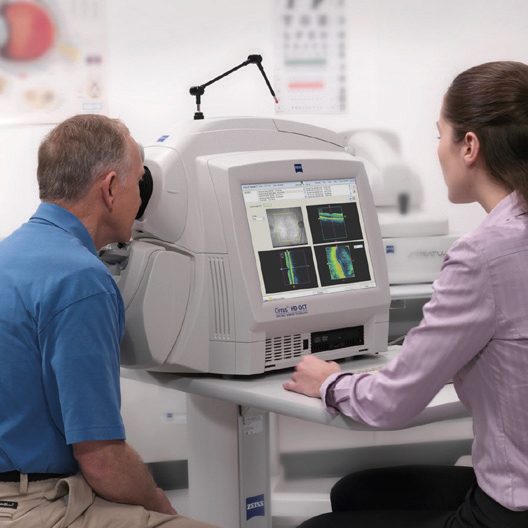
Why are children’s eye exams important?
Eyesight is the most important of our senses and provides 80% of the information used for learning and education, as well as coordinating our movement in and around our surrounding environment. Children require good eyesight and good eye coordination so they can reach all their developmental and educational milestones.
Eye defects often make it difficult for children to achieve their full potential
We asked Dr. Lakkis to unpack everything we need know about children’s eye exams and explain why it is wise to add one to your back to school checklist.
When should you have your child’s eye examined?
Eye examinations can be performed on children at any age, from babies and infants up to adolescents and older teenagers. The type of examination performed depends on the signs and symptoms that the child is experiencing and is tailored to the age group of the child and the level of their development.
In babies and infants, the optometrist looks for issues such as blocked tear ducts that haven’t opened properly, congenital cataracts and childhood tumours that can form inside the eye ball, as well as crossed eyes and droopy eyelids that can cause the development of amblyopia (lazy eye).
From the age of two and a half to three years old, children are usually able to match shapes on the letter chart so that optometrists can assess their level of eye sight (visual acuity) to detect if one or both of the eyes have reduced vision. An assessment is also made of the child’s refractive error (long sighted, short sighted, astigmatism) to ensure that any errors are at the age-expected level. It is an excellent time to have the child examined as a lot of good and reliable data can be collected, and treatments commenced well before the child has to start school.
Between the age of five to seven years old, a full examination can usually be performed at the same level as an adult eye exam. This checks for higher level visual functions such as depth perception, binocular vision eye coordination, and speed and accuracy of changes in focus.
Older children need to be regularly checked for the development of myopia (short sight) and keratoconus (irregular cornea) which greatly impact the ability to see clearly into the distance. Children with special needs such as premature babies and those with Down Syndrome often have poorer vision than the general population and need to start eye examinations at a younger age and have exams more frequently than other children.
General practitioners, child care nurses and paediatricians do not perform eye examinations
What will a comprehensive eye examination involve? How is it different to a general check by a GP?
General practitioners, child care nurses and paediatricians do not perform eye examinations but sometimes conduct “vision screenings” which are a basic test looking for a difference in vision between the two eyes. Unfortunately vision screenings fail to detect a large number of eye problems that are readily detected in a comprehensive eye examination performed by the optometrist, and screenings do not check at all for any eye health issues.
The ideal time to have the child examined is at the beginning of each school year to ensure that their visual development is proceeding normally
Depending on the child’s age group and level of development, the eye examination consists of a large number of tests that assess various aspects of vision and visual acuity, eye coordination and binocular vision, and ocular health. Some of the tests performed are distance and near visual acuity in each eye, subjective and objective measurement of the refraction (prescription) of the eye, stereopsis (3D vision), colour vision, eye coordination, accuracy of focus and ability to shift focus to different positions, and internal and external eye health. A comprehensive eye exam typically takes 30 to 45 minutes to perform.

Why is a comprehensive eye examination recommended for your back to school checklist?
Because 80% of learning comes through eyesight, it is important for the child’s vision and eye coordination to be optimised so there is no detrimental effect on learning and school performance. The ideal time to have the child examined is at the beginning of each school year to ensure that their visual development is proceeding normally, and for the optometrist to treat any underlying conditions that may impact learning. This is why it is critical to add an eye exam to your back to school checklist.
Children’s eyes continue to develop until the late teens and early 20’s, and sometimes large changes in vision can occur within a short space of time. Depending on the type of eye condition present, your optometrist will advise the best timing for the next eye exam as some children require more frequent visits during the school year.
Can poor vision interfere with a child’s learning and social development?
Eyesight is our primary sense and is intimately involved in our ability to develop, learn, walk and play. Vision problems can impact many areas of a child’s development depending on the type of issue involved. Children who have uncorrected hyperopia (long sightedness) often find reading uncomfortable and avoid books and near work, but tend to be more social and outgoing. On the other hand, myopic (short sighted) children often spend a lot of time reading and on technology to the detriment of sporting development and outdoor play, so they tend to be more introverted than other children. Amblyopia (lazy eye) often leads to poor depth perception and poor judgement of distance which can impact their ability to play sports that involve catching and hitting fast moving balls.
Are there any eye conditions in children you are observing that are on the rise?
In terms of human visual development, the eyes are at rest when looking at objects that are far away. Modern society has changed such that children spend the majority of their day performing tasks and looking at objects that are close to them, typically within arms length. Because the human visual system was never designed to do this for long periods, there has been a rapid rise in the development of myopia (short-sight) over the last few decades. In some areas over 90% of children are short-sighted by the time they reach adulthood, and it predicted that half of the world population may become short-sighted over the next 20 years.
My child loves screen time, is this damaging their eyes? How much screen time is too much?
Children spending excessive periods of time looking at screens such as phones, tablets and computers will often develop myopia (short-sight). Not only does myopia caused blurred distance vision, it also leads to the development of numerous eye diseases later in life that can damage the eyes. These eye health problems are potentially blinding and include cataracts early in life, macular degeneration, detached retina and glaucoma. Holding mobile phones very close to the eye for long periods has also resulted in some children developing permanent crossed eyes that required correction through surgery.
It is wise to limit screen time to short periods such as 20-30 minutes, and then have the child spend some time looking at further distance such as playing outdoors, before returning to their screen based equipment. Avoid allowing the child to spend hours on end playing or reading on their screens as this is often a trigger to the development and worsening of myopia. Scientific research shows that children who spend two to three hours a day playing outdoors are much less likely to develop myopia.
As children get older and their homework and study demands increase, it is still important for them to take regular breaks every 30 to 60 minutes so they can stretch their legs and walk outdoors for a few minutes prior to returning to their studies.
It is wise to limit screen time to short periods such as 20-30 minutes
Will a comprehensive eye exam necessarily mean a new pair of glasses?
Optometrists treat eye problems in a number of different ways depending on the nature of the issue detected, and the prescription of new glasses is not always required after an eye exam. Many children have a normal eye examination and require no treatment at all other than regular review visits each school year. If a problem is detected, some of the treatments used include behavioural and lifestyle changes such as outdoor play, vision therapy to train lazy eyes/poor eye coordination, and eye drops and overnight corneal reshaping for myopia management. The optometrist will only prescribe new glasses if that is the most appropriate treatment plan for the child, if there is a worsening of the child’s prescription, the spectacles have become scratched or damaged, or the child requires a second pair of glasses for home and school.
Dr Graham Lakkis is owner of Lakkis Optometry. Dr Lakkis completed a postgraduate degree in Ocular Therapeutics at the University of Melbourne in 2001 to enhance the management of complex eye disease. He was awarded fellowship of the Australian College of Optometry in 2012 for his contributions to the profession of Optometry. Currently Dr Lakkis is Senior Fellow in the Department of Optometry at the University of Melbourne, and lead optometrist of the University Glaucoma Clinic, with responsibility for lecturing and clinical teaching in glaucoma and other eye diseases. Dr Lakkis has also lectured at conferences in Australia and overseas on topics such as macular degeneration, complex contact lens fitting, glaucoma, and scanning laser tomography.


